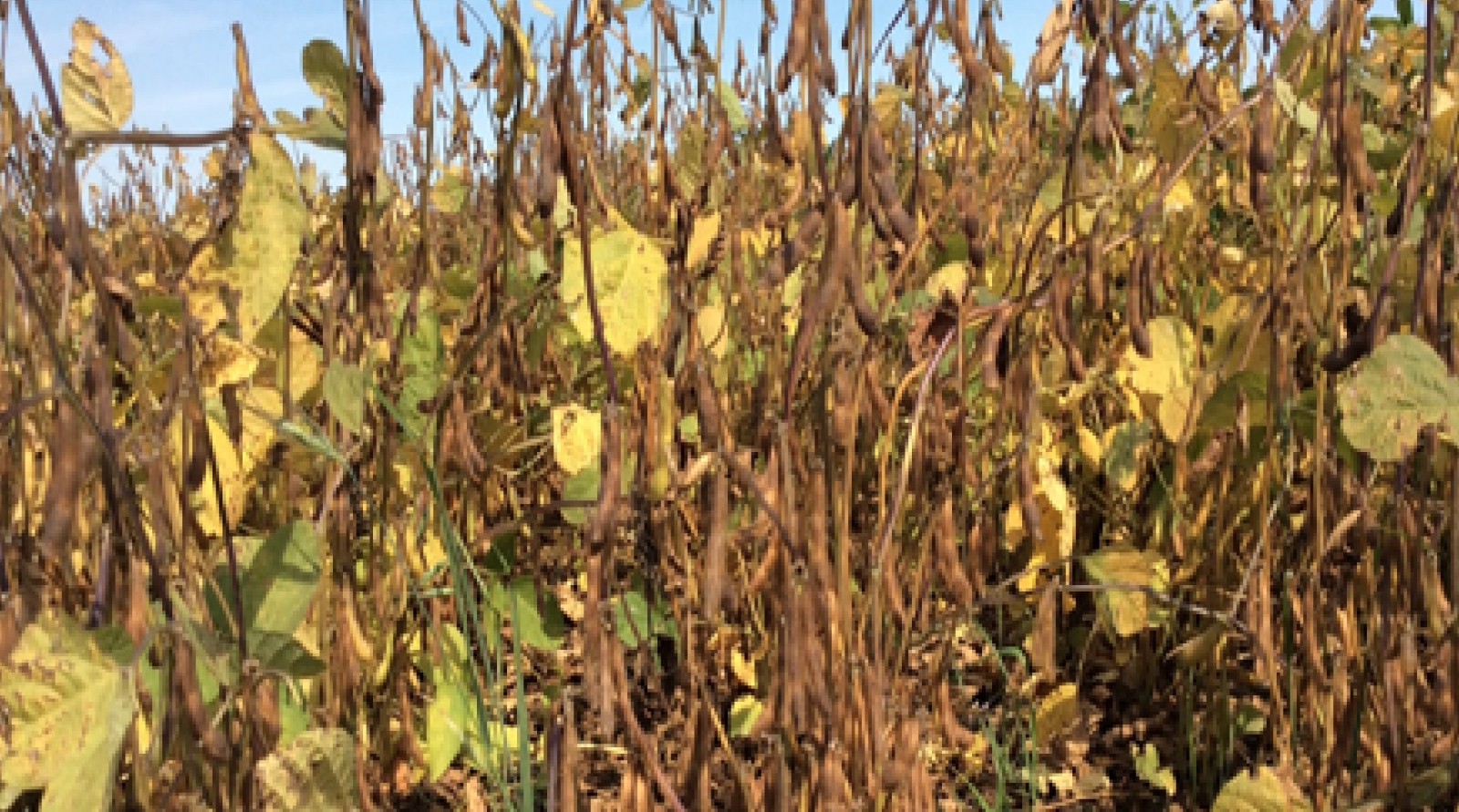The Earliest Maturing Soybean Varieties from NorthStar Genetics

By Teresa Falk
Soybeans are moving farther west thanks to new earlier maturing varieties from companies like NorthStar Genetics.
NSC Leroy RR2Y, NSC Watson RR2Y, and NSC StarCity RR2X are among the earliest varieties available in Western Canada, with NSC Leroy RR2Y possibly being the earliest, according to Claude Durand, product development manager for NorthStar Genetics, based in Manitoba.
“All these varieties have Genuity® Roundup Ready 2 Yield® (RR2Y) or Roundup Ready 2 Xtend® (RR2X) genetics, which have made it possible to substantially reduce the length of growing season required for these varieties, without substantially reducing yield,” he says.
NSC Leroy has a relative maturity (RM) of 000.6, NSC Watson a RM of 000.8, and NSC StarCity a RM of 000.8 with the Roundup Ready 2 Xtend® trait.
NSC Leroy, with 2225 CHU (crop heat units), is a great choice for Saskatchewan farmers in the black soil zone. It has a plant growth structure that is fairly tall and upright.
NSC Watson is also suitable for the black soil zone of Saskatchewan, as well as dark brown and brown zones. It has a 2250 CHU, strong early season vigour and very good height.
NSC StarCity is the first early maturing variety with the Roundup Ready 2 Xtend® trait allowing farmers to use glyphosate and dicamba for extended in-season weed control. It has a CHU of 2250/75 and does well in reduced tillage.
These varieties are a perfect fit for farmers who have a shorter growing season, to mitigate risk of yield reduction due to early frost or adverse conditions through the growing season, says Durand.
Soybean researchers have been looking for varieties that can complete their entire cycle from germination to maturity in a shorter period of time. Through refocused efforts of breeders to reduce growing season requirements of soybean varieties, and with the introduction of the Roundup Ready 2 Yield® system, we have gradually been able to bring to market new earlier varieties each year, says Durand, and have probably reduced the growing period by almost two weeks over a five-year period.
“This has allowed for a significant expansion of the soybean growing area in Western Canada – much of it in areas where growers would not have thought it possible just a couple years ago,” he says. “Now there are a number of varieties in the 000 maturity grouping currently available on the market.”
NSC Leroy can achieve full physiological maturity in 105 days or less. By looking at the NorthStar Genetics staging chart, and referencing it to Leroy’s timeline, a grower should be able to see how low the risk is of significant frost damage in his or her area, says Durand.
While the current NorthStar Genetics lineup would permit soybean production in almost every region in Western Canada, the company continues to evaluate hundreds of lines each year to find new varieties with even earlier maturity and accompanying high yield potential, says Durand.
The yield potential of the shorter season varieties is not quite as high as the longer season varieties, but it is still quite good, Durand notes.
“We’ve seen these varieties yield in the 50-bushel-an-acre range, which has encouraged some growers in the longer season areas to include some of these varieties to spread out their risk and harvest,” he says, adding data has also shown that in shorter season areas the earliest varieties tend to yield higher than the longer season ones.
When it comes to planting conditions, Durand recommends that any soybean variety be planted once the ground is warm enough (10° Celsius or higher), wherever you are located. Typically, these temperatures occur in mid to late May. Because the eastern Prairies has a longer growing season, Durand says these growers should go with longer season varieties versus further west where they tend to get cooler temperatures and earlier frost. However, growers in longer growing season areas might switch to early maturing varieties, if planting was substantially delayed due to poor weather, he says.
Another consideration for growers is moisture conditions. Varieties with a shorter growing season could potentially reach full maturity before moisture reserves dry up, says Durand; however, on the flip side, they may not be able to take advantage of some late season rainfalls.
“That is why many farmers will grow more than one variety with a maturity spread that will manage the risk and reward of either scenario,” he says.
For more information on these early maturing soybean varieties, visit https://northstargenetics.ca/soybeans/



